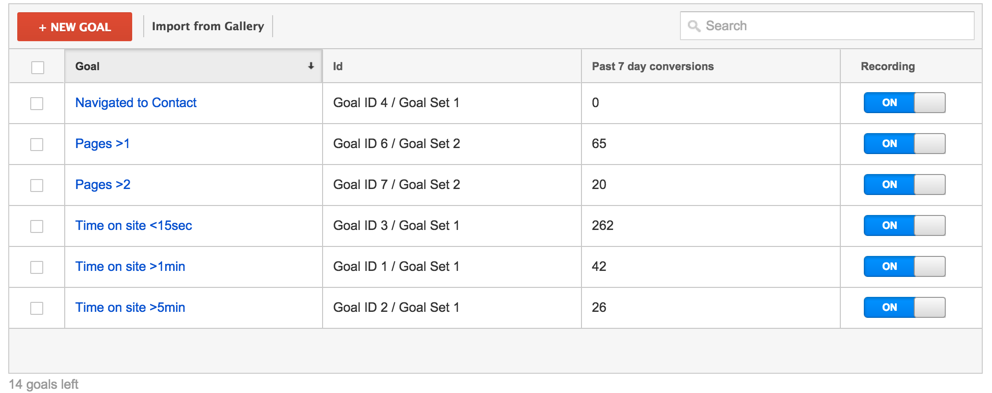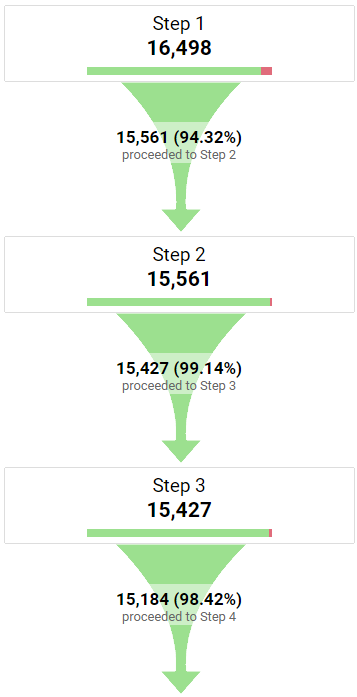Debunking Google Analytics Limitations: Discover What Information Goals Can not Track
In the realm of digital analytics, Google Analytics stands as a powerful device that offers beneficial insights into web site efficiency and user habits. Nonetheless, among its capabilities, there exist constraints that frequently go undetected. Comprehending what Google Analytics can not track is crucial for a detailed understanding of information analysis and decision-making procedures. From the intricacies of individual communication with dynamic content to the intricacies of cross-device customer journeys, these constraints dropped light on areas that might remain obscured from typical analytics perspectives. By untangling these restraints, a more clear photo emerges, allowing for even more educated methods and improved understandings into user interaction and conversions.

Individual Interaction With Dynamic Material
Individual interaction with vibrant content plays a vital role in understanding customer behavior on websites and maximizing the overall customer experience. By tracking customer communications with dynamic material, site owners can obtain important understandings right into customer interaction, preferences, and behaviors - what data is google analytics goals unable to track.
Google Analytics uses different devices to track individual communications with dynamic content, such as occasion monitoring and digital pageviews. Event tracking enables you to keep track of details customer actions, like clicking a button or enjoying a video, supplying data on exactly how users interact with vibrant components. Virtual pageviews can be used to track communications that do not cause a new web page load, providing a comprehensive view of user engagement with vibrant content. By evaluating this information, web site owners can make informed choices to enhance customer experience and drive conversions.
Cross-Device Customer Journeys
Exactly how can modern analytics tools track the complicated paths customers take across multiple tools in their on the internet journeys? Cross-device user trips provide a substantial challenge for tracking and assessing customer actions precisely. As individuals interact with applications or websites utilizing various tools such as smartphones, tablets, and desktops, it comes to be vital to comprehend just how they relocate between these platforms to optimize user experience efficiently.
Google Analytics encounters limitations in tracking cross-device customer trips due to personal privacy worries and technological restrictions - what data is google analytics goals unable to track. While it can supply understandings into specific tools' communications, tracking a smooth user journey throughout numerous tools remains a difficulty. This restriction can result in incomplete information and fragmented user understandings, making it hard for businesses to develop a unified sight of the client trip
To address this concern, services can use innovative analytics devices that supply cross-device tracking abilities, enabling them to acquire a much more all natural understanding of customer habits. By leveraging these tools, services can connect the gap in tracking cross-device user trips and enhance their digital methods for a smooth individual experience.
Offline Conversions and Attribution
As organizations browse the challenges of tracking cross-device individual trips, another pivotal element to take into consideration is the world of offline conversions and acknowledgment in the realm of information analytics. While Google Analytics gives important understandings right into online customer actions, it drops short when it involves tracking conversions that occur offline. This limitation presents a significant obstacle for services that have both online and offline sales networks.
Offline conversions, such as acquisitions made in physical stores or through phone call centers, are vital to recognizing the full client trip. Without the ability to associate these offline conversions to certain online interactions, services might have a hard time to properly determine the impact of their digital advertising and marketing initiatives.
To resolve this void, companies can discover alternative solutions such as integrating CRM systems with online analytics tools or using distinct promotion codes that can be traced back to on-line projects. By linking the gap between online and offline information, services can obtain a much more thorough understanding of their customers' behavior and improve their general marketing approaches.
Person Individual Identification
In the world of information analytics, the capacity to precisely determine specific customers throughout numerous online touchpoints is a vital obstacle for businesses looking for to personalize and optimize their advertising and marketing approaches. While Google Analytics offers important understandings right into user habits and communications, it falls short in making it possible for the identification of particular individuals as a result of privacy concerns and technological limitations. Google Analytics utilizes unique identifiers such as cookies to track individual sessions and actions, yet these do not equate to click here to find out more determining private customers in a personal sense.

Data From Secure Pages
In spite of the boosting frequency of secure pages on web sites, acquiring information from these encrypted sources offers a special difficulty for digital analytics systems like Google Analytics. Secure web pages, shown by HTTPS in the URL, secure data traded in between the individual's web browser and the website's web server to ensure personal privacy and protection. While this security is vital for protecting delicate details, it additionally postures limitations for tracking individual actions and event analytics data.
Google Analytics deals with challenges in gathering thorough info from safe and secure web pages because of the security procedures in position. Because of this, certain information points such as recommendation resources, keyword searches, and even some user interactions might not be completely recorded when users access a web site via a secure link. This limitation can impact the accuracy and completeness of the information evaluation, causing spaces in understanding customer behavior and preferences on safe web pages.
To browse this obstacle, electronic experts might require to explore different monitoring techniques or leverage various other devices particularly created to gather insights from safe and secure pages. By adapting strategies to accommodate these constraints, services can still derive beneficial analytics despite the restraints provided by encrypted links.
Final Thought
In verdict, Google Analytics has restrictions in tracking customer interaction with vibrant content, cross-device customer trips, offline conversions, individual user identification, and information from safe blog here pages. Despite its important insights, Google Analytics may not provide a total image of individual engagement throughout various touchpoints.
User communication with dynamic web content plays an essential duty in comprehending customer behavior on web sites and enhancing the general user experience. By tracking individual communications with dynamic web content, internet site proprietors can gain beneficial understandings right into customer involvement, choices, and habits.
Google Analytics makes use of distinct identifiers such as cookies to track user sessions and habits, however these do not relate to recognizing specific customers in a personal sense.
As a result, specific information points such as recommendation resources, keyword searches, and also some user interactions may not be fully recorded when users access a site with a safe connection.In verdict, Google Analytics has constraints in tracking individual communication with vibrant web content, cross-device customer trips, offline conversions, private user recognition, and information from protected web pages.